If you’re a regular reader of Prehistoric Times magazine, you’ve probably noticed the prime ad space that always seems to be occupied by Dinostoreus. This is a good thing, though. In addition to supporting such a great publication, Dinostoreus really embodies the mature aesthetic and academic priority of the seasoned dinosaur enthusiast. Sure, the fleshed-on models are bound to look a little dated as time plods along, but most of their replicas are based on good ol’ fashioned fossils. Skulls aren’t likely to change much as new information comes to light – at least not as much as a fully fleshed reconstruction – and this makes them more of an iconic collectible, something that will withstand the test of time.
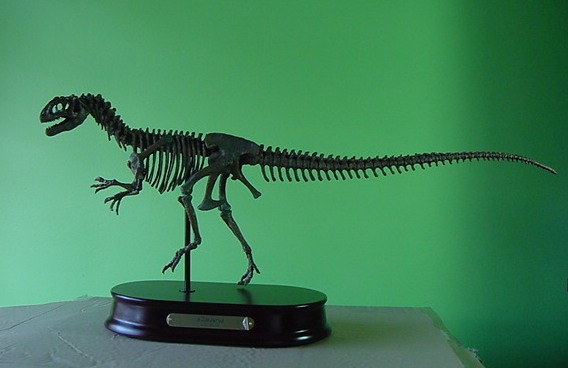
Straddling the borders of fossil evidence and artistic reconstruction are the coveted skeletal models. These fall within the higher price range of the Dinostoreus line, as well as the most fragile of the bunch. Their size allows each bone to stand out as an identifiable piece of the animal’s biological framework, making them useful for educational purposes and certainly satisfying collectors looking for something better than the dime-shop glow-in-the-dark plastic skeleton toys. My particular interest often drifts to the mighty Allosaurus fragilis, a staple of the Jurassic North American stage.
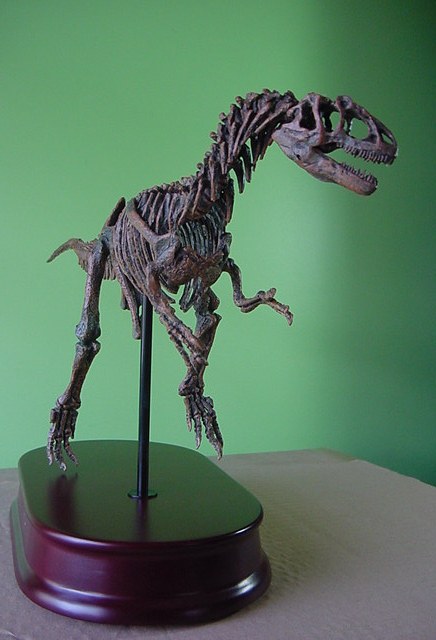
With this model, one can clearly recognize the most distinctive attributes of the animal. The high lacrimal crests, the hatchet shaped skull, the elegant length of the tail, and the powerful, inward-facing forearms are all present and accounted for. Since the reconstruction bears no flesh, there is no quibbling about speculative neck wattles or spiky adornments. It is simply Allosaurus as we know her, and as she might well appear in a museum mount.
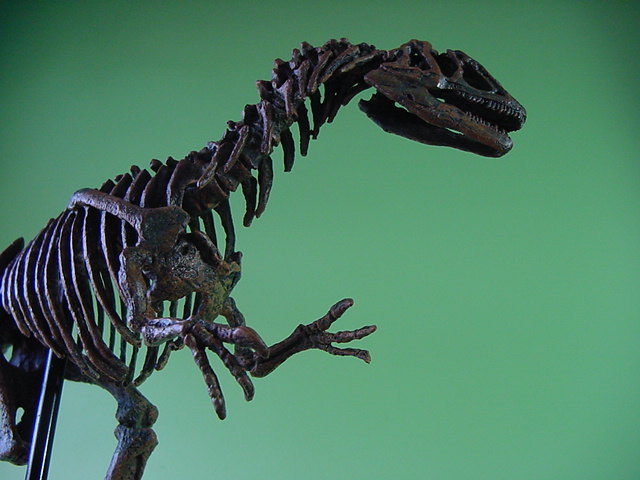
The model is centered by a sturdy rod, held in the center of the wooden base. The standard name plate is present, of course. Just peel off the protective sticker, and you’re good to go. That being said, removing this delicate beauty from the box can be an adventure on its own, slowly unsheathing the silent beast from its styrofoam bedding, which is admirably buffered within the box by soft foam padding. This particular model even came with a full page of instruction, offering tips on how to safely remove the model from its protective shell. Not even Sideshow has offered such a courtesy for their models.
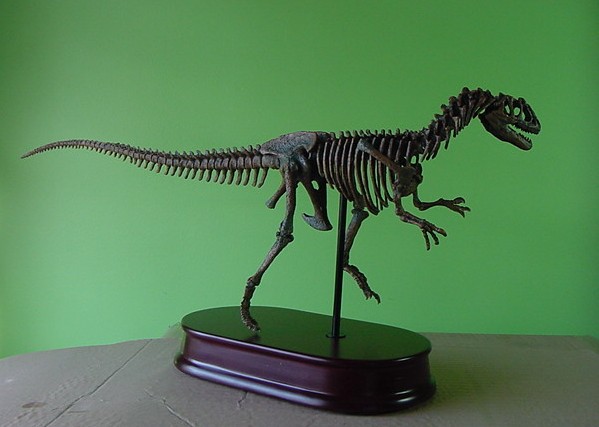
An excellent quality of movement is conveyed with the uplifted foot, suggesting a running pose. This would actually be difficult for a mass-produced model to pull off, but luckily, this piece takes full advantage of that solid central support rod. Some may find it distracting, but I honestly found it less cluttered-looking than a museum display. The “grounded” foot actually hovers just a few millimeters above the wooden base, presumably to prevent abrasive damage, and further cushioned by a bit of foam padding in the original packaging.
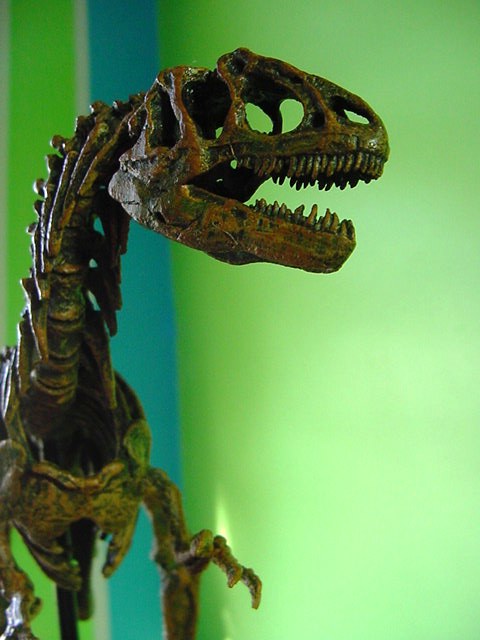
Since this replica isn’t too big – about 20 inches in length and 1:20 scale – it seems to get away with having the teeth all banded together. Separating them would have surely resulted in too many breaking off. The skull itself looks nice, and the varied shades of brown and green help add depth and interest to what might have a very bland arrangement of bones.
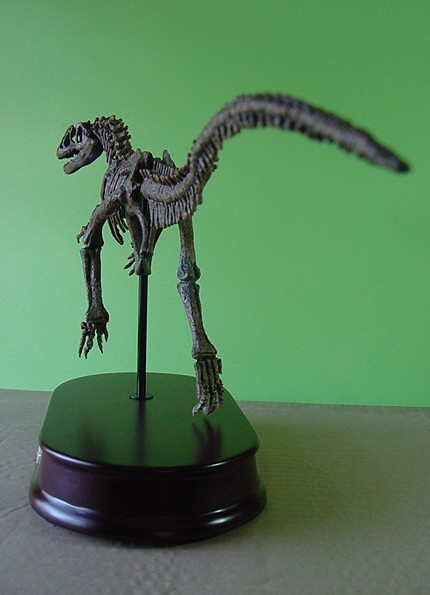
In the event of breakage, many repairs can be performed with standard superglue treatment. The Allosaurus is actually relatively small among other Dinostoreus skeleton models, making it a fairly affordable way to treat oneself – and I’ve been told it’s one of the sturdiest of the bunch. Like the skull models, these pieces have the “adult” feel if you’re worried others may ridicule your interest in dinosaurs. As if that’s ever happened.
Disclaimer: links to Ebay and Amazon on the DinoToyBlog are affiliate links, so we make a small commission if you use them. Thanks for supporting us!




@FooMan666 Now you mention it, it might be. I’m not sure.
is it just me, or does the skull seem a little bit on the small side?
great review though.
Great review, Dan!